
Roots
There exists a quiet wisdom in the daily rituals we perform, particularly those tending to our crowns. For generations, the delicate, coiled architecture of textured hair has whispered tales of both strength and vulnerability. It is a structure of inherent splendor, yet one that calls for thoughtful care to truly flourish.
The question of whether a simple sleep cap holds the key to preserving this intricate beauty often arises, not as a fleeting thought, but as a genuine inquiry born from a desire to shield what is precious. To truly comprehend the role of such a seemingly modest accessory, one must first journey inward, into the very essence of a strand, and then outward, to the subtle forces that shape its destiny each night.
The hair we carry, especially hair with a natural curl or coil, possesses a unique morphology. Unlike straight hair, which tends to be uniformly round in cross-section, textured strands often exhibit an elliptical or even flattened shape. This structural variation leads to the formation of bends, twists, and coils along the shaft. At each of these bends, the hair’s outermost protective layer, the cuticle, is slightly raised, creating points of potential fragility.
The cuticle, composed of overlapping, scale-like cells, acts as the hair’s primary defense against environmental stressors and mechanical friction. When these scales lie flat and smooth, the hair reflects light with a healthy sheen and retains moisture effectively. When they are disturbed or lifted, however, the hair becomes susceptible to moisture loss, tangling, and ultimately, breakage.
Textured hair, with its distinctive coiled structure, possesses inherent points of fragility where its protective cuticle layer is naturally elevated.
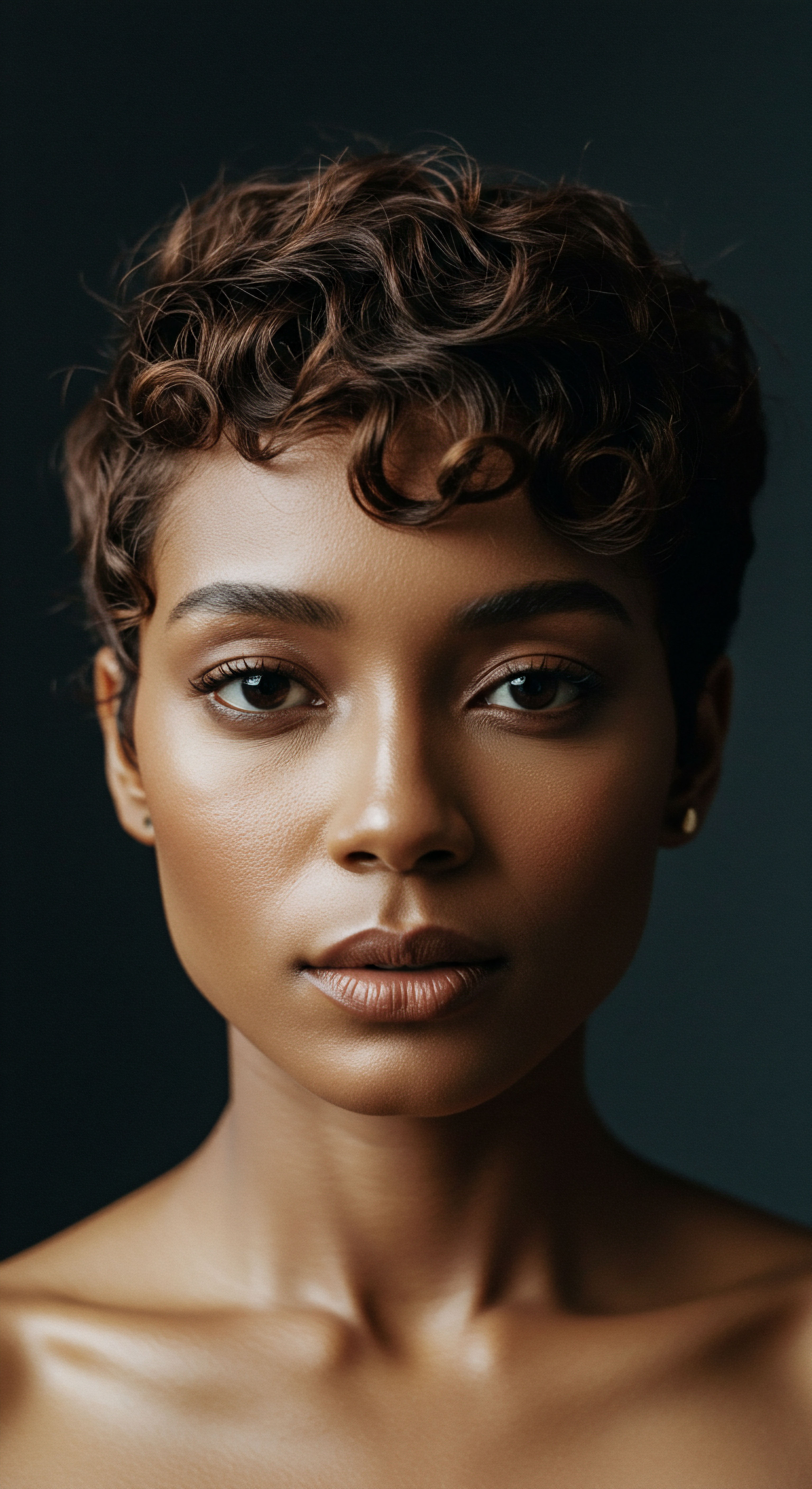
Hair Anatomy and Physiology Specific to Textured Hair
Deep within the scalp, the hair follicle, a tiny organ, dictates the shape and texture of the hair strand that emerges. For textured hair, the follicle itself is often curved, influencing the helical growth pattern. This curvature means that the hair strand is not uniformly cylindrical; its diameter can vary along its length, and its internal protein bonds, particularly disulfide bonds, are distributed in a way that creates the characteristic curl.
The cortex, the hair’s main body, comprises keratin proteins that provide strength and elasticity. The medulla, the innermost core, may be present or absent, and its presence can also affect the hair’s overall resilience and thermal conductivity.
The unique configuration of textured hair means it naturally possesses fewer cuticle layers in certain areas of its bends and twists compared to straight hair. This predisposes it to increased vulnerability. When hair is dry, the cuticle scales are more likely to lift, making the hair feel rough and appear dull. Conversely, well-moisturized hair allows these scales to lie flatter, creating a smoother surface.
Understanding this delicate balance is foundational to appreciating any protective measure, including the use of sleep caps. The interaction between hair and external surfaces during rest can either preserve this delicate cuticle alignment or disrupt it, leading to unintended consequences.

The Essential Lexicon of Textured Hair
To speak of textured hair with precision is to use a vocabulary that honors its specific qualities. Terms like Coily, Kinky, Curly, and Wavy describe the various curl patterns, often categorized using numerical and alphabetical systems (e.g. 3A, 4C). Porosity refers to the hair’s ability to absorb and retain moisture, influenced by the cuticle’s condition.
High porosity hair, with its more open cuticles, readily absorbs water but also loses it quickly, while low porosity hair, with tightly closed cuticles, resists water entry but retains moisture once it penetrates. Elasticity measures the hair’s ability to stretch and return to its original state without breaking, a sign of healthy protein and moisture balance. These terms are not merely descriptors; they are diagnostic tools, guiding individuals toward care practices that genuinely serve their unique strands.
- Coily ❉ Hair with very tight, small coils, often forming a Z-pattern.
- Porosity ❉ The hair’s capacity to absorb and hold moisture.
- Elasticity ❉ The hair’s ability to stretch and recoil without snapping.
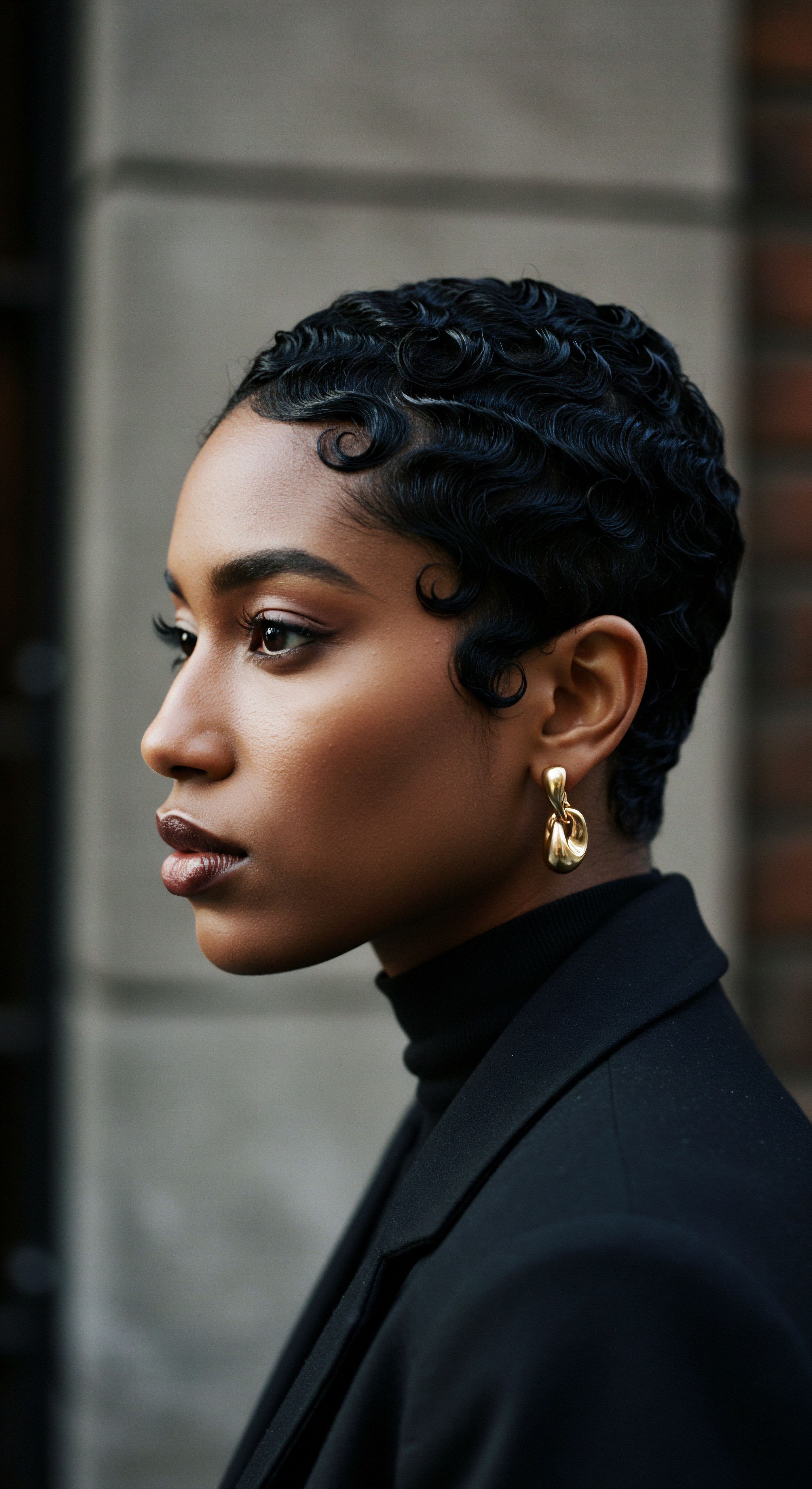
Hair Growth Cycles and Influencing Factors
Hair growth follows a cyclical pattern ❉ anagen (growth phase), catagen (transition phase), and telogen (resting phase). The duration of the anagen phase largely determines hair length, and for textured hair, this phase can vary widely among individuals. Factors such as genetics, nutrition, stress, and overall health significantly influence these cycles. Mechanical stress, particularly repeated friction, can prematurely push hairs from the anagen phase into catagen or telogen, leading to increased shedding and a perceived lack of growth.
The physical environment the hair encounters daily, and especially during prolonged periods like sleep, directly impacts its integrity throughout these cycles. Protecting the hair from unnecessary mechanical stress during its most vulnerable state – when it is simply resting – can therefore play a silent, yet profound, role in supporting its natural growth journey.
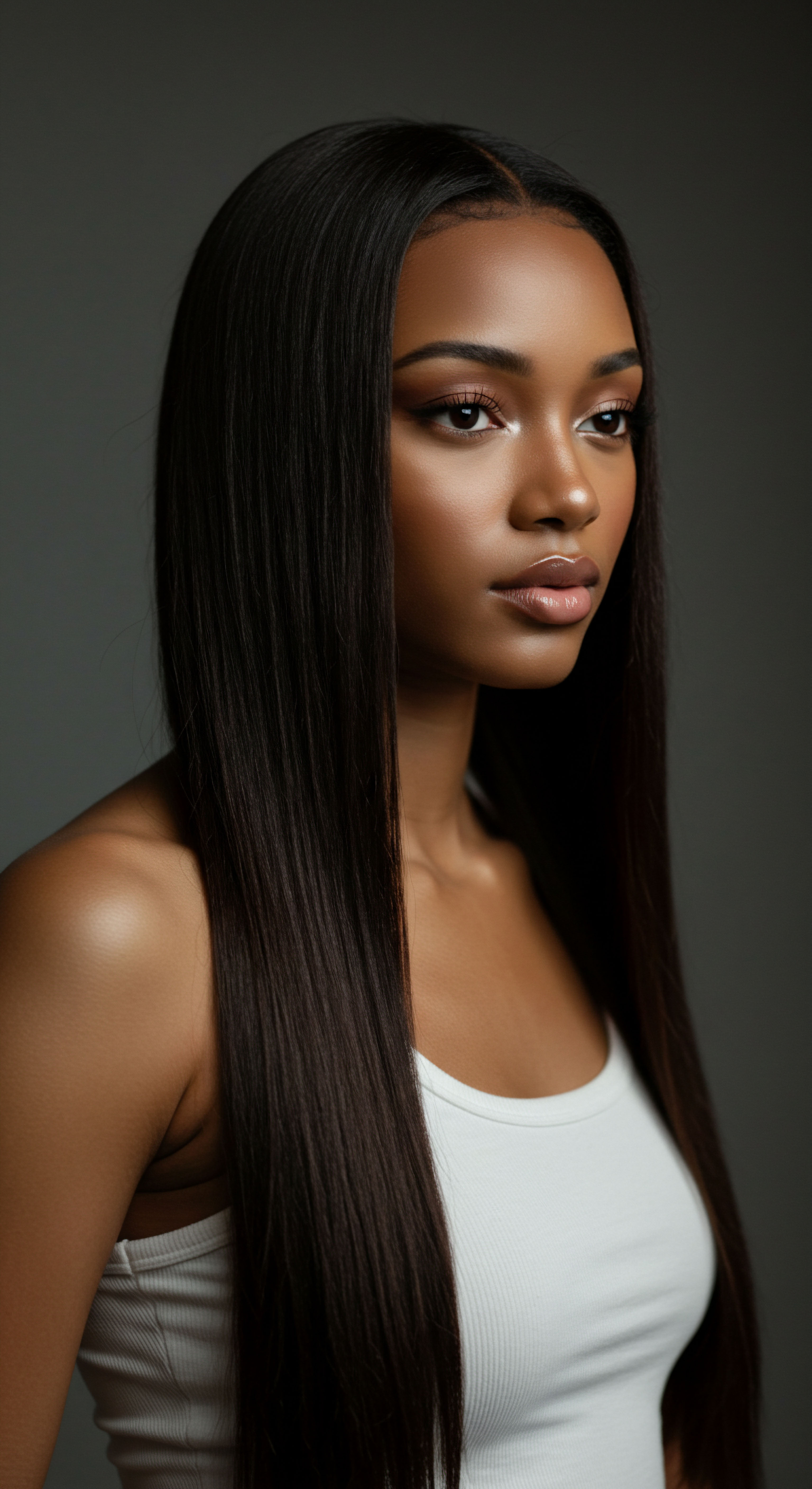
Ritual
As the day recedes and twilight settles, a distinct shift occurs in the way we approach our hair. The daytime focus on definition and style often gives way to a deeper consideration of protection and preservation. This transition, particularly for those with textured hair, often culminates in a nighttime ritual, a quiet practice aimed at safeguarding the strands through hours of unconscious movement.
The inclusion of a sleep cap in this nightly ceremony is not a modern invention but a continuation of age-old traditions, adapted with contemporary materials, all designed to mitigate the subtle, yet relentless, forces of friction and moisture loss. The efficacy of this practice hinges on a clear understanding of the mechanics at play and the thoughtful selection of tools.
During sleep, our heads move against pillows, creating a constant, albeit gentle, rubbing action. For textured hair, with its naturally raised cuticle scales and propensity for tangling, this friction can be particularly detrimental. The delicate cuticle layers can be lifted, abraded, or even stripped away, leading to frizz, dryness, and ultimately, breakage. Cotton pillowcases, while comfortable, are particularly notorious for their absorbent properties and rough surface texture.
They can draw moisture from the hair, leaving it parched, and their fibers can snag and pull at individual strands, exacerbating mechanical damage. The sleep cap, in its various forms, offers a barrier, a smooth sanctuary that allows hair to glide rather than snag, and to retain its vital moisture rather than relinquish it to thirsty fabrics.
Nighttime movement against abrasive fabrics like cotton can damage textured hair by lifting cuticles and drawing out moisture.
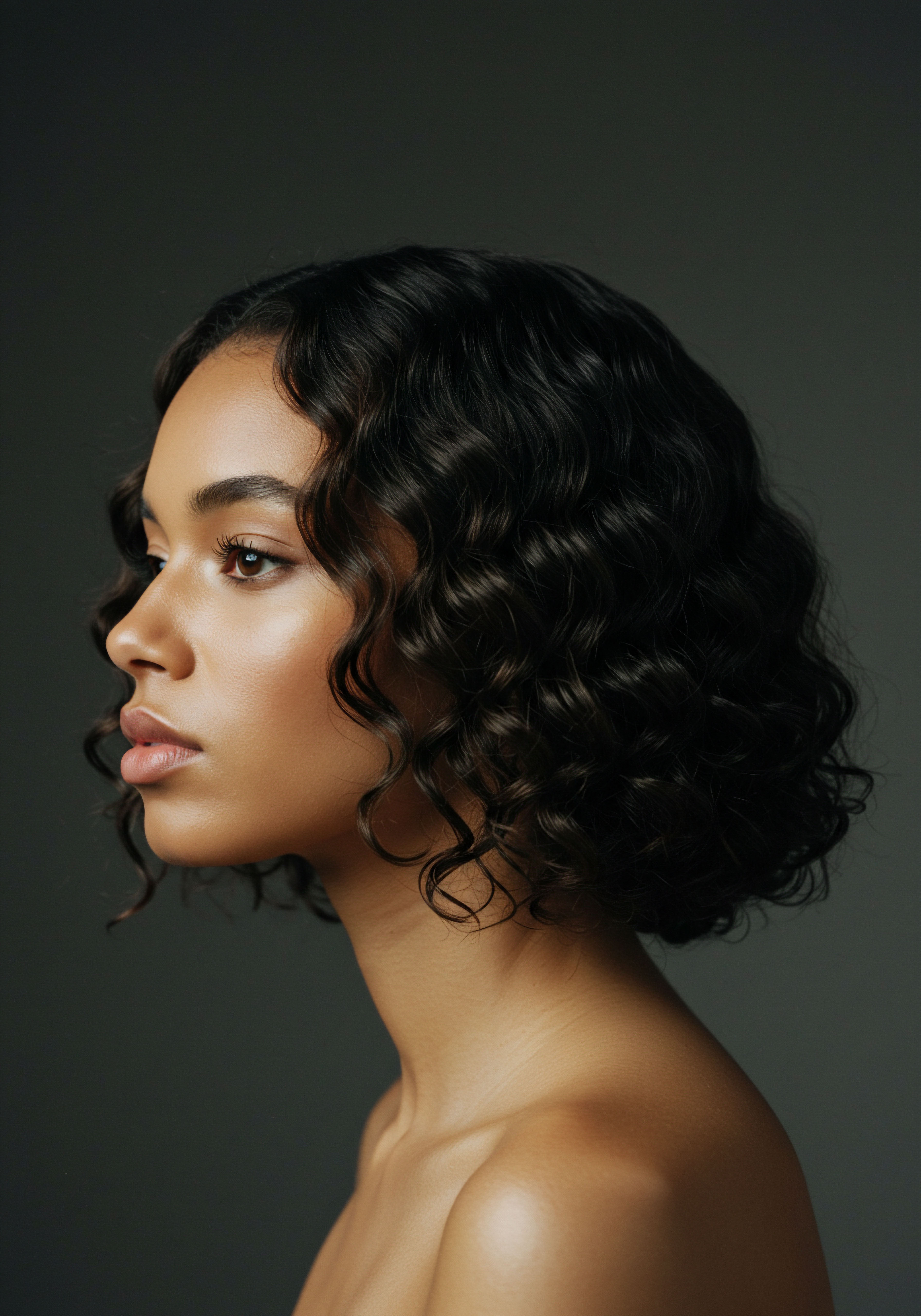
The Nighttime Sanctuary Essential Sleep Protection
The primary function of a sleep cap, often crafted from materials like silk or satin, is to create a low-friction environment for the hair. Silk and satin possess smooth, tightly woven fibers that reduce the mechanical stress on hair strands. Unlike cotton, which has a rougher surface and absorbent qualities, these materials allow hair to glide freely, minimizing tangles, knots, and breakage.
This reduction in friction is particularly significant for textured hair, which is inherently more prone to mechanical damage due to its coiled structure and raised cuticle points. By preventing the constant rubbing against abrasive surfaces, sleep caps help to maintain the integrity of the hair’s cuticle, keeping it smooth and intact.
Beyond friction reduction, sleep caps serve a crucial role in moisture retention. Textured hair is often naturally drier than straight hair because the natural oils produced by the scalp struggle to travel down the coiled shaft. This makes moisture a precious commodity. Silk and satin are less absorbent than cotton, meaning they do not wick away the hair’s natural oils or applied styling products.
This helps to preserve the hair’s hydration levels overnight, preventing dryness, brittleness, and the subsequent need for excessive re-moisturizing, which can also lead to over-manipulation. The consistent moisture balance fostered by a sleep cap contributes to hair that feels softer, appears shinier, and is more resilient over time.
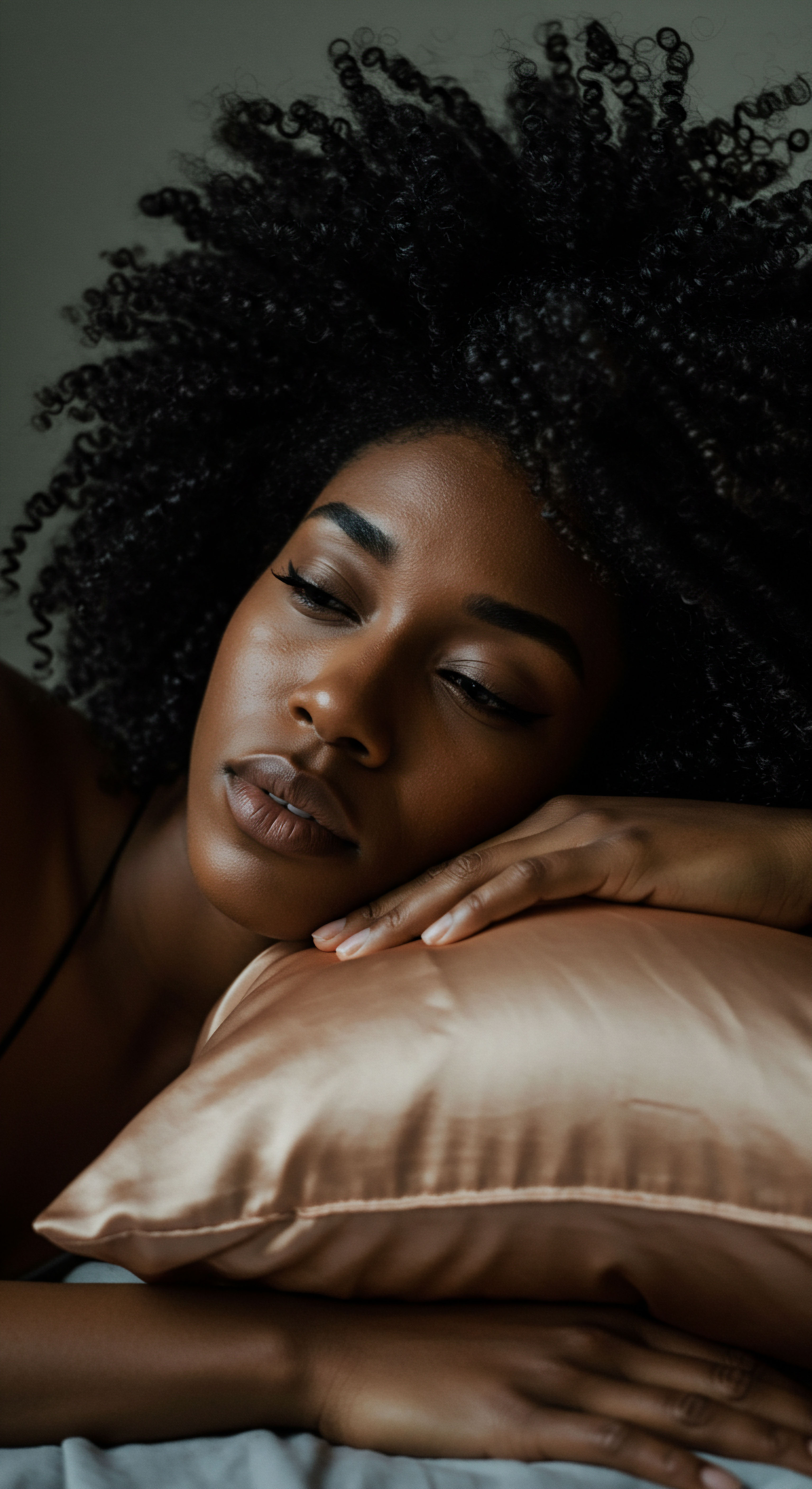
Comparing Materials Silk and Satin
While both silk and satin are lauded for their hair-protective qualities, a subtle distinction exists between them. Silk is a natural protein fiber produced by silkworms. It is renowned for its smooth texture, breathability, and natural protein composition, which some believe offers additional benefits to hair and skin. Satin, conversely, refers to a type of weave, not a fiber.
It can be made from various materials, including polyester, nylon, or even silk. When made from synthetic fibers, satin offers the desirable smooth surface at a more accessible price point. The key benefit for hair protection comes from the smooth, slick surface of the satin weave, regardless of the fiber composition. Both effectively reduce friction and help retain moisture, making the choice often one of personal preference, budget, and a desire for natural versus synthetic materials.
| Property Surface Texture |
| Cotton Rough, fibrous |
| Satin (Synthetic) Smooth, slick |
| Silk (Natural) Very smooth, soft |
| Property Moisture Absorption |
| Cotton High |
| Satin (Synthetic) Low |
| Silk (Natural) Low |
| Property Friction Reduction |
| Cotton Low |
| Satin (Synthetic) High |
| Silk (Natural) Very High |
| Property Breathability |
| Cotton High |
| Satin (Synthetic) Moderate |
| Silk (Natural) High |
| Property The choice of material significantly impacts hair protection during sleep. |
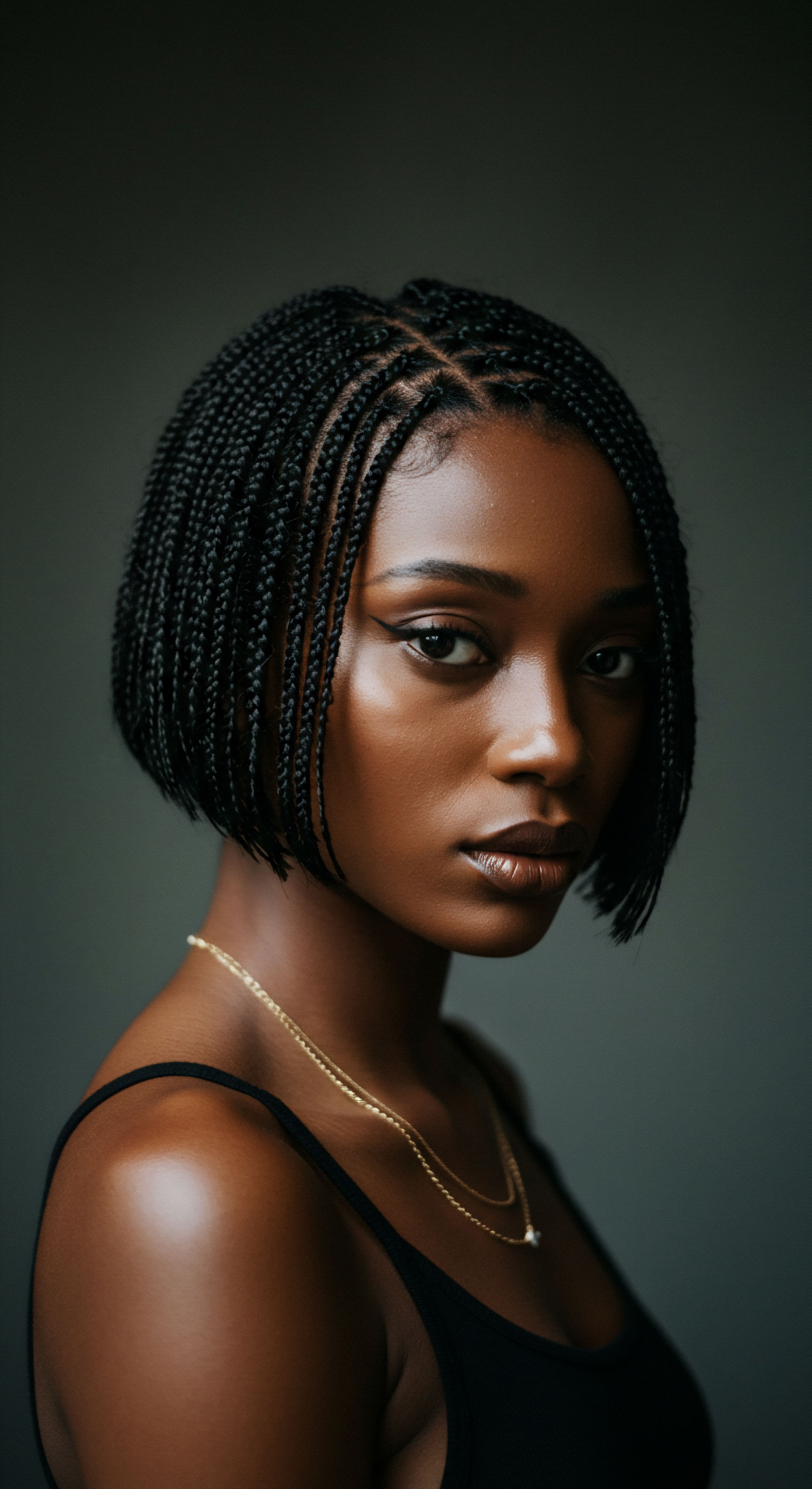
Protective Styling Encyclopedia
Sleep caps also extend the life of protective styles. Styles such as braids, twists, cornrows, and bantu knots are designed to minimize daily manipulation and protect the hair ends. A sleep cap acts as an additional layer of defense, preventing these styles from unraveling prematurely or becoming frizzy due to friction.
It helps maintain the neatness and definition of the style, thereby reducing the frequency of re-styling, which in itself can be a source of mechanical stress. For individuals who invest time and effort into creating these styles, a sleep cap becomes an indispensable tool in their maintenance arsenal, preserving the integrity of their chosen look and supporting overall hair health.
The ritual of donning a sleep cap is not simply a mechanical act; it is an act of intention, a conscious choice to prioritize hair wellness. It transforms the hours of sleep from a period of potential damage into a time of restorative care. This consistent nightly practice, when coupled with a thoughtful hair regimen, can significantly contribute to the long-term vitality and beauty of textured strands, allowing them to truly flourish.

Relay
Moving beyond the immediate sensory experience of soft fabric against hair, the deeper inquiry into sleep caps reveals a complex interplay of physical forces, material science, and even the subtle influence of daily habits on the very architecture of our strands. To ask whether sleep caps truly preserve textured hair is to seek an understanding that extends beyond anecdotal affirmations, reaching into the empirical realm where the nuances of fiber interaction and structural integrity are meticulously examined. This deeper investigation unearths compelling insights into how seemingly minor protective measures contribute to significant long-term hair health.
The core mechanism through which sleep caps are hypothesized to protect textured hair revolves around reducing friction. Hair, particularly textured hair with its non-uniform cross-section and naturally lifted cuticle scales, is highly susceptible to mechanical abrasion. When hair rubs against rough surfaces like cotton, the friction generates forces that can lift, chip, or even remove cuticle cells. This damage compromises the hair’s protective barrier, leading to increased porosity, moisture loss, and ultimately, a weakened strand more prone to breakage.
Sleep caps protect textured hair by reducing friction, which safeguards the cuticle from mechanical damage and moisture loss.
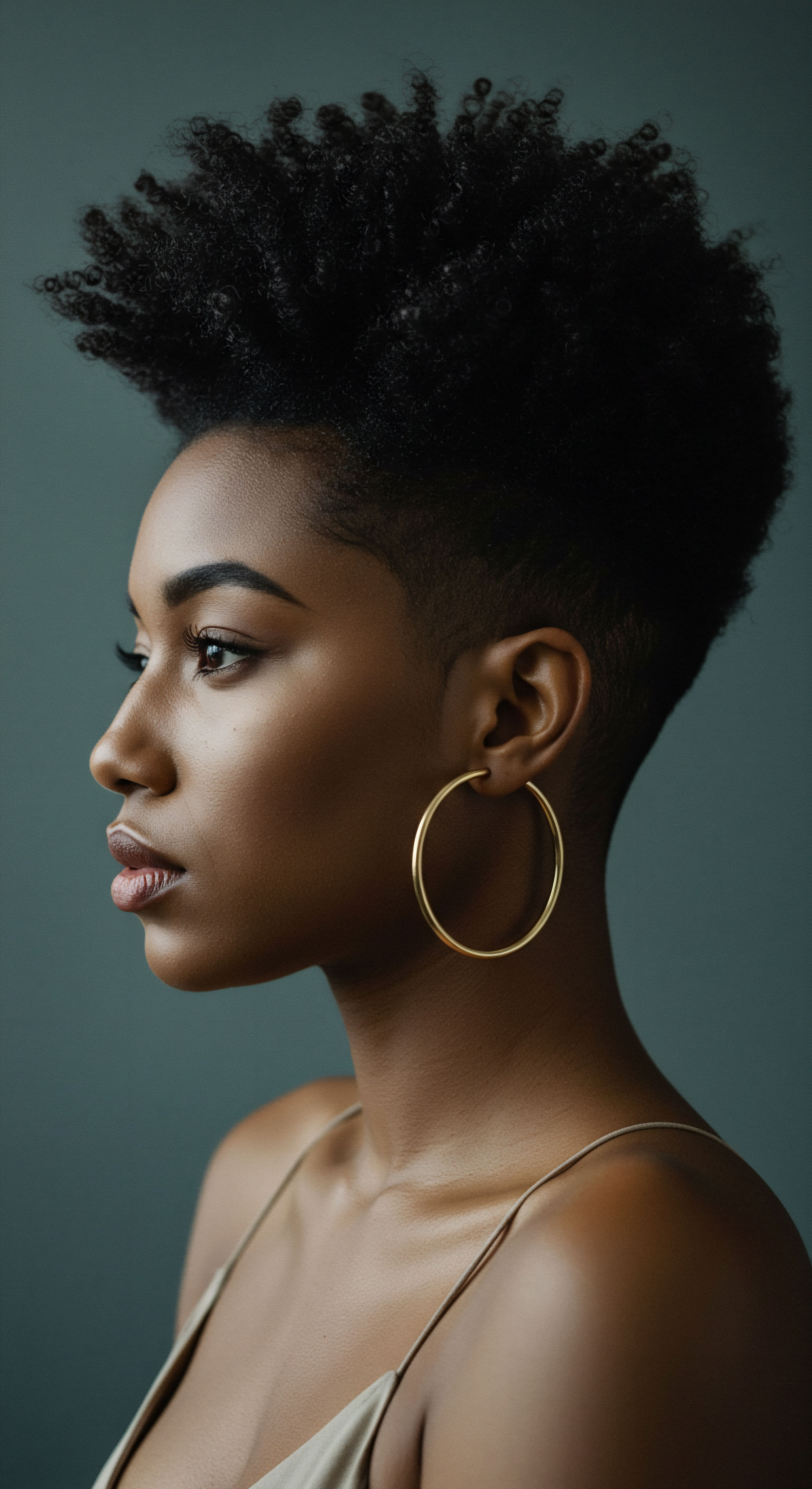
Does Fabric Surface Influence Hair Breakage Rates?
Research into tribology, the science of friction, wear, and lubrication, offers a compelling perspective on this. Studies examining the coefficient of friction between human hair and various textile surfaces consistently show that materials like silk and satin exhibit significantly lower friction values compared to cotton. For instance, a study published in the Journal of Cosmetic Science in 2014, titled “The Influence of Fabric Properties on Hair Friction and Damage,” by E. L.
Waller, M. E. Waller, and D. L.
Jones, demonstrated that hair rubbed against cotton experienced a notably higher coefficient of friction and subsequently, greater surface damage and cuticle lifting compared to hair rubbed against silk or satin. The study quantified the degree of cuticle damage using scanning electron microscopy (SEM) and found a direct correlation between higher friction coefficients and increased structural compromise of the hair shaft. This empirical evidence underscores the physical protective benefit offered by the smooth surface of sleep caps.
Consider the implications of this constant, low-level abrasion over time. A single night of friction might seem negligible, but cumulatively, over months and years, the repetitive stress can lead to chronic cuticle damage, thinning ends, and a persistent struggle with frizz and dryness. A sleep cap acts as a consistent, nightly intervention, mitigating this cumulative damage and allowing the hair’s natural repair processes to function more effectively. It is a proactive measure that prevents the incremental degradation of the hair’s external layer, thereby preserving its internal strength and moisture balance.

The Interplay of Moisture and Mechanical Stress
Beyond friction, the role of moisture cannot be overstated. Textured hair, by its very nature, tends to be drier due to the challenges natural scalp oils face in traveling down the coiled shaft. Cotton, being a hydrophilic (water-loving) fiber, readily absorbs moisture from its surroundings, including the hair.
This osmotic pull can strip the hair of essential hydration, leaving it parched and brittle. When hair is dry, its elasticity diminishes, making it more susceptible to breakage under even minimal mechanical stress.
Silk and satin, conversely, are hydrophobic (water-repelling) or less absorbent, meaning they do not actively draw moisture from the hair. This creates a microclimate within the sleep cap that helps to seal in the hair’s natural oils and any applied conditioning treatments. The preserved moisture contributes to improved elasticity and flexibility, making the hair less prone to snapping when subjected to minor movements during sleep. This dual action – reducing friction and retaining moisture – creates a synergistic protective effect that is far more potent than either mechanism alone.

Cultural Resonance and Psychological Impact
The practice of covering hair for protection, particularly during sleep, holds a deep cultural resonance across various communities with textured hair. This is not merely a practical consideration but often a tradition passed down through generations, embodying a wisdom that predates modern material science. From historical head wraps to contemporary bonnets, these coverings have served to preserve hair, maintain styles, and signify identity. The continuity of this practice speaks to an intuitive understanding of hair’s vulnerability and the importance of its preservation.
Furthermore, the consistent use of sleep caps can have a subtle yet profound psychological impact. The act of engaging in a protective nighttime ritual can foster a sense of care and intentionality towards one’s hair. This mindful approach to hair wellness can reduce stress associated with hair damage, improve self-perception, and cultivate a deeper appreciation for one’s natural texture. The feeling of waking up to hair that is less tangled, less frizzy, and more hydrated can significantly boost confidence and reduce the time and effort required for morning styling, thereby reducing overall hair manipulation.
The preservation offered by sleep caps transcends mere physical protection; it extends to the preservation of moisture, style, and indeed, the very well-being that comes from honoring one’s hair with consistent, thoughtful care. The scientific backing for friction reduction and moisture retention solidifies the empirical basis for a practice that has long been understood through lived experience and cultural heritage.
- Cuticle Integrity ❉ The condition of the hair’s outermost protective layer.
- Coefficient of Friction ❉ A measure of the resistance to motion between two surfaces.
- Scanning Electron Microscopy ❉ A technique used to observe the microscopic structure of materials.

Reflection
The journey through the intricate world of textured hair care, culminating in the quiet wisdom of the sleep cap, reveals a tapestry of interconnectedness. It is a reminder that the most profound forms of care often reside in consistent, gentle practices. The simple act of covering one’s hair at night is not merely a trend, but a continuation of ancestral knowledge, now bolstered by scientific understanding of friction and moisture.
It speaks to a deeper relationship with our hair, one that values its delicate structure and honors its resilience. As we continue to learn and grow, the essence of hair preservation remains rooted in mindful intention, allowing each strand to truly embody its natural splendor.
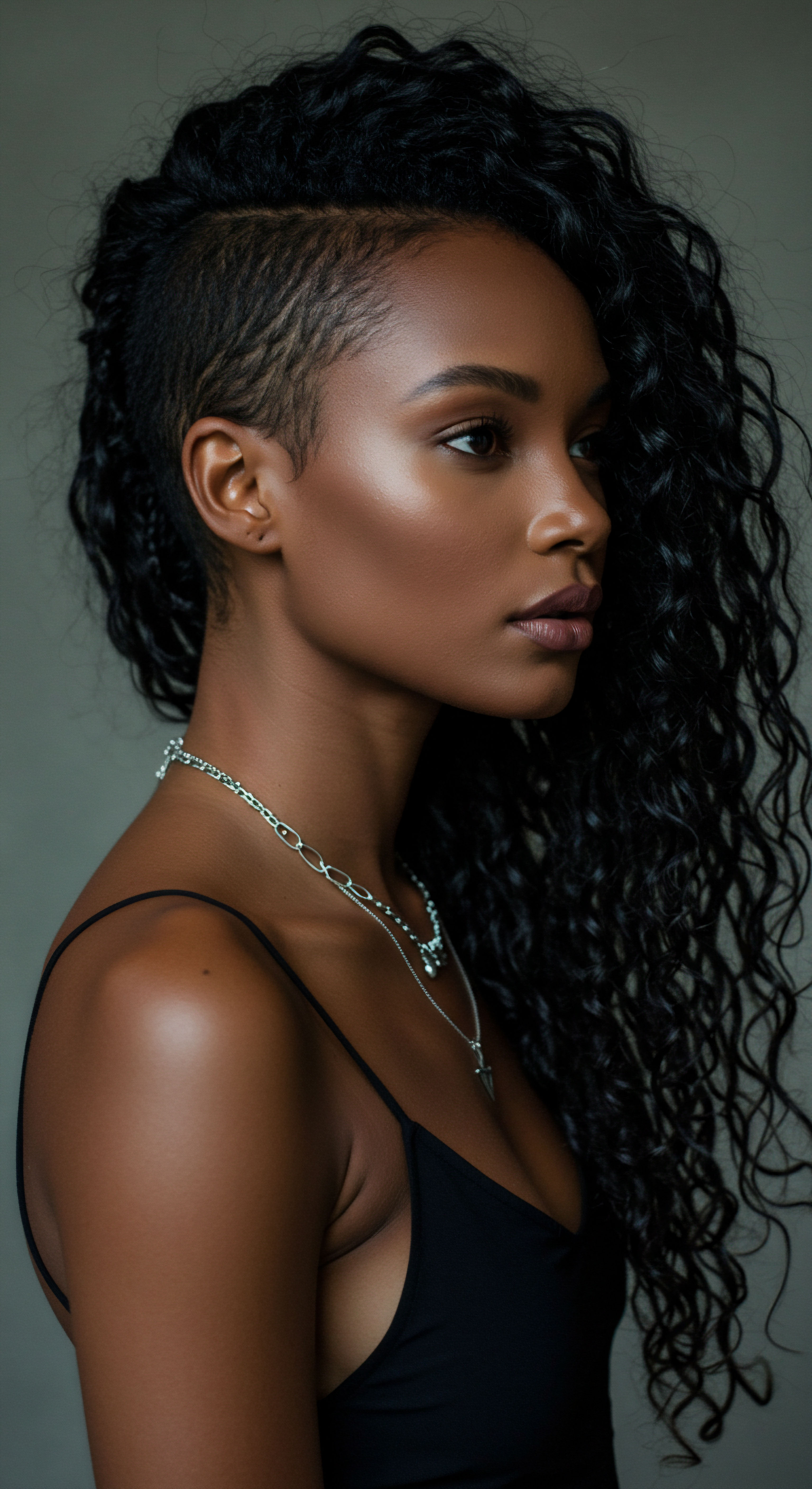
References
- Waller, E. L. Waller, M. E. & Jones, D. L. (2014). The Influence of Fabric Properties on Hair Friction and Damage. Journal of Cosmetic Science, 65(2), 115-125.
- Robbins, C. R. (2012). Chemical and Physical Behavior of Human Hair (5th ed.). Springer.
- Feughelman, M. (1997). Mechanical Properties of Wool and Hair. UNSW Press.
- Dawber, R. P. R. (2002). Hair and Scalp Disorders ❉ Common Problems and Their Management (2nd ed.). Blackwell Science.
- Franbourg, A. Hallegot, P. Baltenneck, F. Freyssinet, J. M. & Bouillon, C. (2003). Current research on ethnic hair. Journal of the American Academy of Dermatology, 48(6), S115-S119.
- Popescu, D. P. & Hogan, R. (2007). Hair Damage by Brushing and Combing. Journal of Cosmetic Science, 58(2), 125-139.
- Gueniche, A. & Breton, L. (2006). Hair and Scalp Biology. Clinics in Dermatology, 24(5), 379-385.